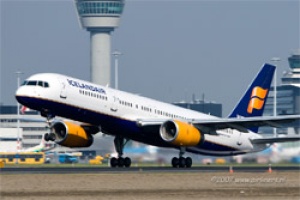March global airline capacity exceeds 2008 levels reports OAG

Global airline capacity for March 2010 shows positive growth, when compared to the same month in both 2009 and 2008, reports OAG (www.oagaviation.com), the global leader in aviation intelligence, in its monthly report on trends in the supply of airline seats and flights. Monthly analysis of the OAG schedule information indicates that the total number of seats available in March is increasing 5% over 2009. The total number of seats available in March 2010 is 303.1 million, compared to 289.8 million in 2009, and 299.6 million in 2008.
“March capacity is rebounding and 2010 exceeds not only that of a year ago, but of the same month in 2008, before the start of the global recession. This growth in worldwide capacity signals increased confidence in travel demand,” said Peter von Moltke, Chief Executive Officer, UBM Aviation.
Worldwide, airlines will operate 4% more flights in March 2010, as compared to March 2009. The total number of scheduled flights operating in March 2010 is 2.46 million.
The highest percentage change in seat capacity to/from a region is to and from Africa, with an increase in the number of seats by 19%, year-over-year. Other significant growth is occurring within Central and South America at 18% and within the Middle East with a 17% increase in seat capacity.
The total number of seats available, worldwide, on flights to and from Europe in March increases 4%, and the number of flights to and from Europe increases by 6% in March. In fact, the numbers of flights to and from Europe are the highest they have been in the last ten years.
ADVERTISEMENT
The total seat capacity on flights within Europe will increase by 2%, with an additional 1.27 million seats. Marginal growth within the continent is expected with the number of flights increasing less than 1%, or by 1,850 to a total of 549,718.
“March is generally a good mix of corporate and leisure traffic, and this year’s growth signals expected demand in both areas. Even in North America and Europe, where overall growth is lower than the other regions, some of the larger airports such as Berlin Schoenfield, London Gatwick, Fort Lauderdale and Baltimore Washington International, are showing increased capacity,” von Moltke continued.
The total seat capacity on flights to and from North America will grow 1% to 17.05 million in March. Flights to and from North America will increase by 2%, to a total of 88,293. This includes traffic to and from four of the largest U.S. airports, Chicago O’Hare, Dallas Fort Worth, Los Angeles and Denver, where an increased number of flights can be expected in March. Frequency and capacity within North America, on the other hand, will experience a 2% decline throughout the month.
OAG FACTS uses interactive graphs to display performance trends of specific airports, routes, countries or regions from 2001 onwards, sourced from OAG’s consolidated database of global airline schedules. A more detailed review of this month’s OAG FACTS statistics—including information about specific regions, routes and airports with illustrative charts and graphs—is available to download at:
http://www.oagaviation.com/aviation-reports/reports-facts-0310.htm
.
